Good Morning everyone for all of our friends who are at Blurtter and have been joining Blurtter for a long time, hopefully we are always healthy and can always carry out activities as usual. So on this occasion I want to write a little bit about Fruit Spotting Bug | Photography | Macro hopefully later it can become a memory for myself, and for other friends who are already married, don't forget to also give directions and input if later in my writing there are still words- words that are not polite, therefore I apologize once again.
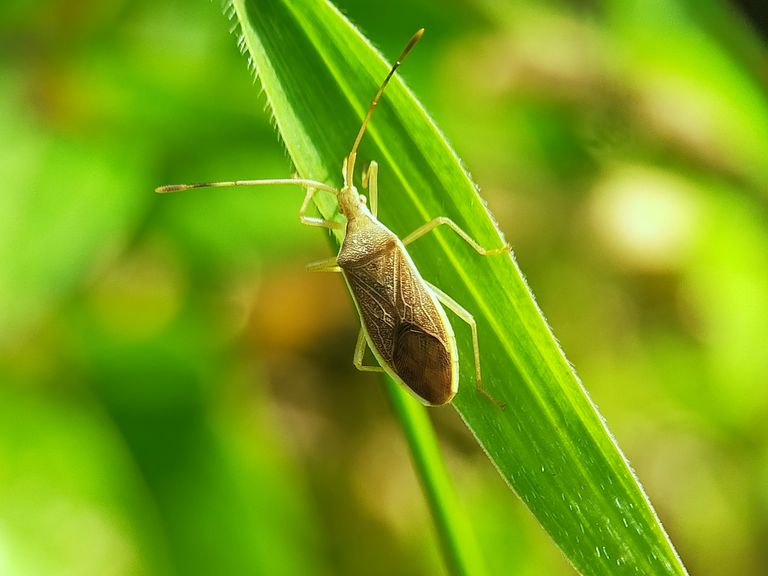
The broad-headed insect belongs to the family Alydidae, a well-known but relatively small family of plant-eating true insects. These insects are usually seen feeding on the leaves and flowers of leguminous and graminaceous plants. Leptocorisa acuta can be found on many food crops in the Poaceae (grass) family, especially rice, and is reported to be an important economic pest in rice-producing countries such as India, Australia, and China . Leptocorisa acuta is usually found in the flowering phase of rice plants, which coincides with rainfall and high humidity at the beginning of the rainy season. Nymphs and adults use their piercing-sucking mouthparts to eat the developing rice grains. These insects prefer to feed when the host plant is young, when the starch in the grain is not yet fully formed.

Leptocorisa acuta is crepuscular, active in the morning and evening. During the midday heat, they leave the paddy fields in search of weeds (Pathack and Khan 1994). These insects also seek shelter during the dry months. Leptocorisa acuta is known to transmit Sarocladium oryzae and Sarocladium attenuatum, which cause midrib rot disease. Midrib rot disease damages the branching flower panicles of rice plants, causing the plants to produce underdeveloped or damaged grains. In severe cases, infected plants may not produce rice grains.
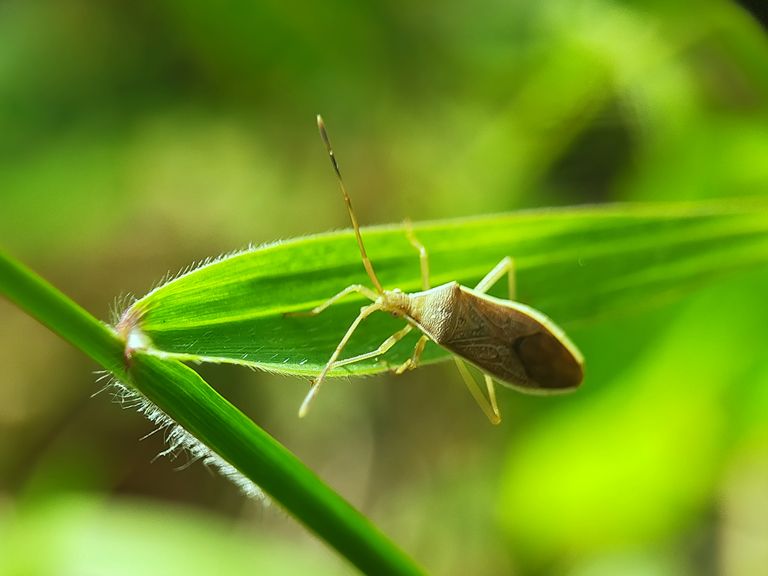
Leptocorisa acuta has not been found in the US although large areas of rice are grown in California, Louisiana and Arkansas. Rice lice have been found in Australia, Bangladesh, Burma, China, Fiji, India, Indonesia, Malaysia, Papua New Guinea, the Philippines, Thailand and Samoa as well as in several Central American countries. Due to its wide distribution in other rice-producing countries, Leptocorisa acuta is a potential invasive pest for the US, but has not been reported. Adult Leptocorisa acuta is long (14-17 mm) and slender. They are light yellow-green to yellow-brown in color. The head is broad, often similar in length and width to the upper surface of the pronotum of the first plate on the thorax and the triangular plate of the scutellum on the chest, behind the pronotum. These insects have round, protruding eyes in addition to small ocelli (simple eyes), which are difficult to see. The fourth antenna segment is curved and longer than the third segment.

Adults are usually found in aggregations. Like all true insects, they have piercing-sucking mouthparts that puncture the substrate they feed on, which can damage plant tissue and reduce grain yields. When disturbed, adult insects emit an unpleasant odor that is considered to be stronger than the odor emitted by true bed bugs . noted that adults can spread by flying from plant to plant in the field, but do not appear to be capable of sustained flight.
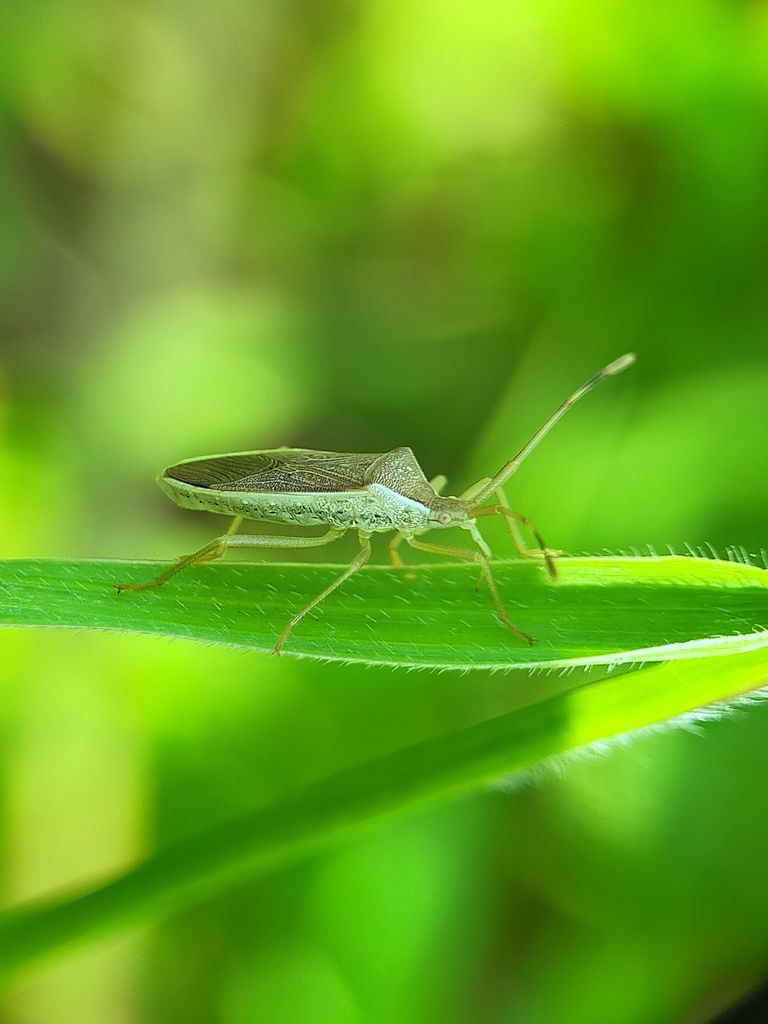
Eggs: Eggs are oval in shape with a slightly flat top. The female lays eggs in clusters of 10 to 20 rows on the upper surface of the leaf blade. When freshly stored, the eggs are creamy yellow, turning reddish-brown after about a week. Nymphs: A week after oviposition, the eggs hatch, and within 3-4 hours the nymphs begin to eat . There are five wingless nymph instars with a total nymphal period of 25-30 days. Nymphs are mostly pale yellow-green in color and have long antennae. Each nymph instar looks very similar to the previous one, except that each successive nymph is larger than the last and wing-bearing enlargement occurs. Unlike other species in the subfamily Alydinae, the nymph Leptocorisa acuta does not imitate ants.
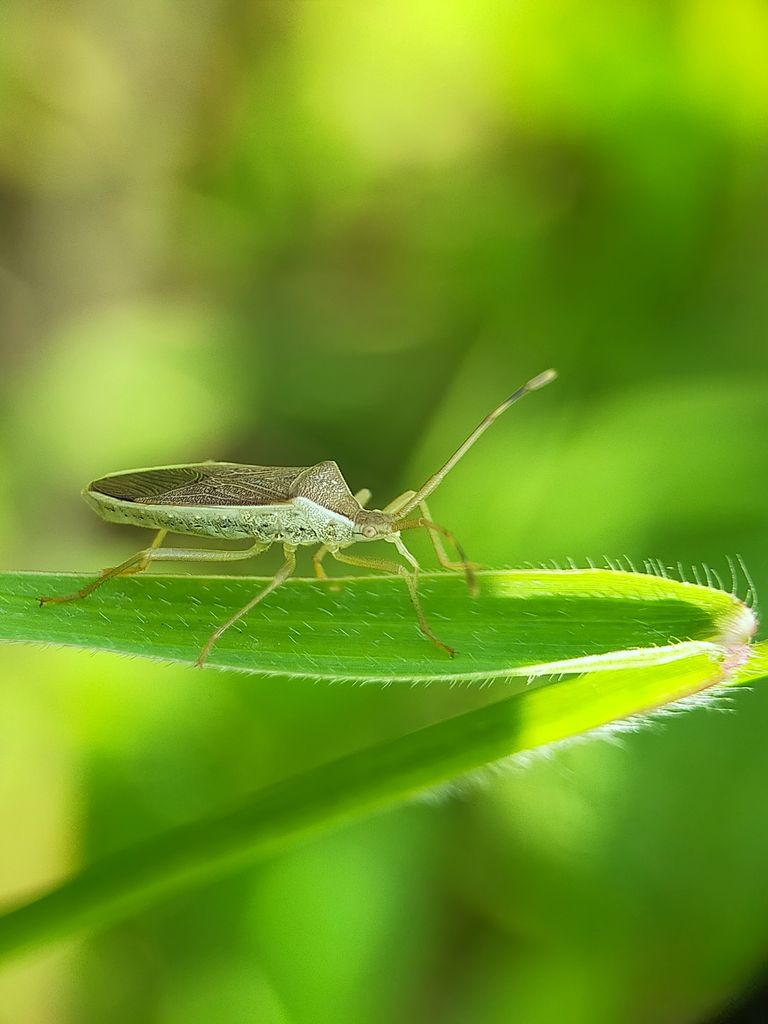
Leptocorisa acuta adults are crepuscular (active in the morning and evening). After 8-29 days, adults of both sexes become fully mature. Adults can live up to 69 days. Women live longer than men on average: 60 and 48 days, respectively. Rice lice are most abundant at conditions of 80-82°F and relative humidity of about 80% (Pathack and Khanv 1994). Populations tend to increase during the flowering stage of rice plants, which coincides with warmer weather. Once adults emerge in spring, rice lice feed on wild host plants for a generation or two before migrating to rice fields.
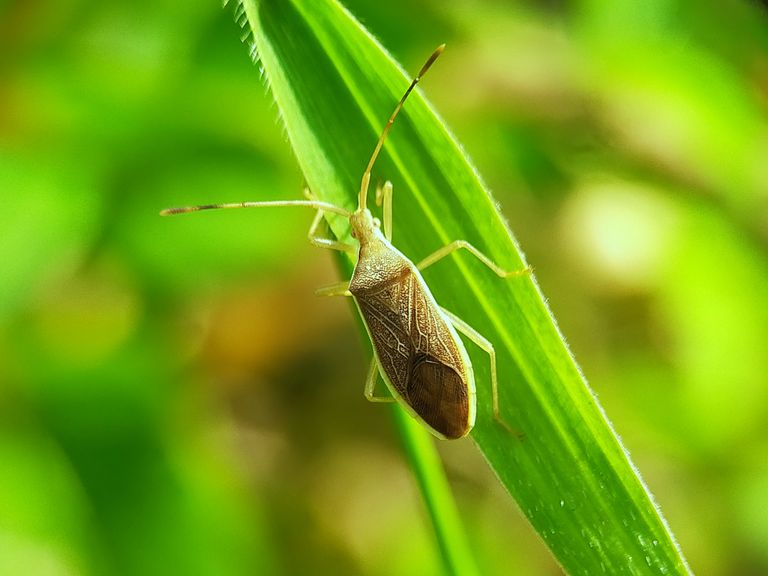
It is believed that after the rice is harvested, the insects overwinter in the weeds or other grass crops. According to Schaefer and Panizzi (2001), the female lays up to 25-87 eggs during her lifetime. Eggs are deposited in single or double rows of 10 to 20 on the upper surface of the host plant's leaves. The eggs are attached to the leaves by an adhesive substance secreted by the female during oviposition. According to Corbett (1930), newly emerged nymphs can live for at least 24 hours without food. Despite their varying sizes, the five nymphal instars are not easily distinguished from each other due to their similar appearance.
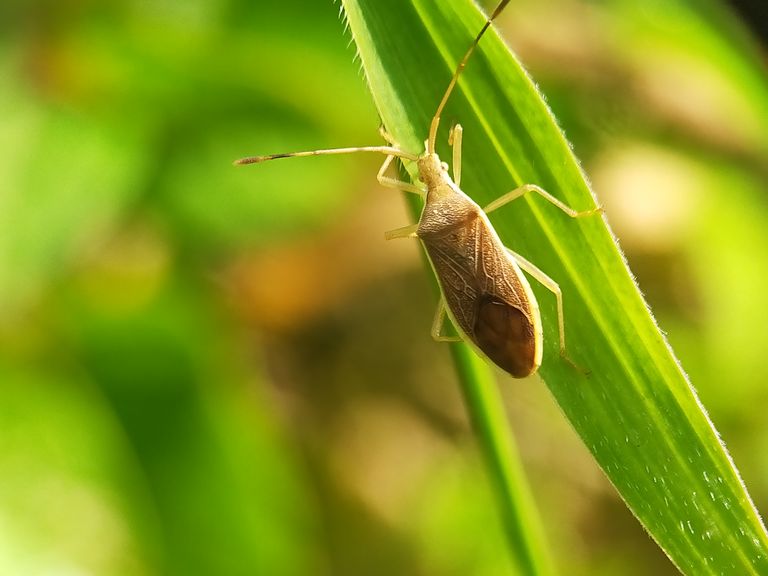
The rice louse feeds by inserting its needle-like mouthparts into new leaves, soft stems, and developing grains. As a result, the plant reacts to repair tissue and close the wound. When injuries accumulate, plants become stressed, which can lead to delayed grain growth and some grain and crop deformation. Overfeeding can cause yellow spots on the leaves. This reduces photosynthesis and, in extreme cases, can damage the vascular system of the plant. The puncture hole also serves as an entry point for several plant pathogens, such as the fungus that causes midrib rot disease. The most economically important damage is caused when adults and nymphs eat the developing grain. The damage causes discoloration of the grain, which reduces market quality.

Leptocorisa acuta feeds on graminaceous plants such as rice, wheat, and sugarcane . It is thought that rice in the flowering stage is the preferred host. Other important hosts include many well-known weeds, such as summer grass millet (Alloteropsis cimicina (L.)), Indian bluegrass (Bothriochloa pertusa, crow's foot grass (Dactyloctenium aegyptium) (L.)) and swollen finger grass (Chloris barbata Sw). . Other reported hosts include mango (Magnifera indica L.), guava (Psidium guajava L.), jackfruit (Artocarpus spp.), and nuts (Phaseolus vulgaris L.).
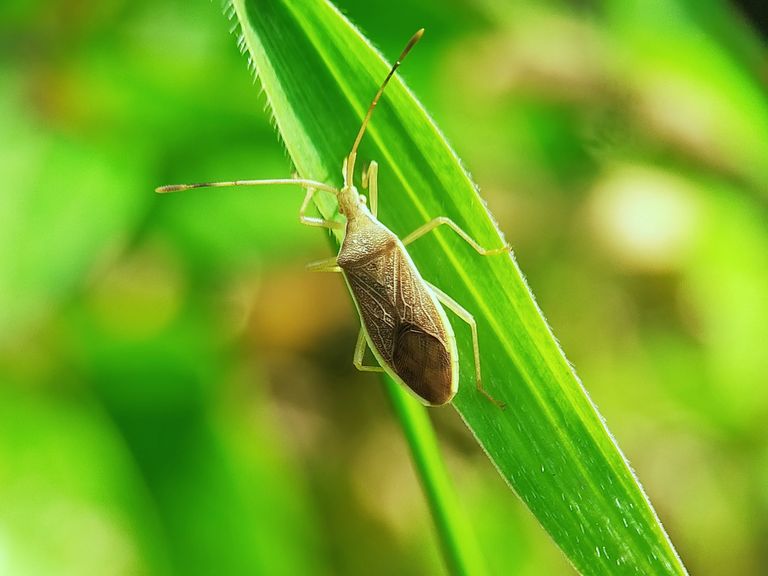
Culture: As a precaution, removal of alternative hosts, especially graminaceous weeds, can prevent rice aphid populations from reaching destructive levels. This is because the insects need a wild host to feed and reproduce before moving into the fields in early spring. The use of late-ripening cultivars can reduce feeding damage from rice lice, because their activity is compatible with warm weather and the flowering stage of the host grass. Irrigation should be managed to avoid excessive moisture. Corbett (1930) pointed out that nymphs and adults may be attracted to trapping grass or rice plants planted earlier and insects may be collected before the main plants flower. Flooding is effective in killing rice flea eggs, as well as pushing adults to the top of rice plants where they are more susceptible to pesticides. Chemical: Control of rice lice mainly relies on chemical insecticides and a number of them are readily available.

The high rice flea population is due to factors such as nearby forests, large areas of weeds near rice fields, weeds near canals, and staggered rice cultivation. These insects also become active when the rainy season begins. Warm weather, cloudy skies, and frequent drizzles support the increase in its population. Rice louse population increases at the end of the rainy season. Rice lice are found in all rice environments. They are more common in rainfed and upland rice fields and prefer flowering over the milky phase of rice plants.

Adults are active in the afternoon and early morning. In bright sunlight, they hide in grassy areas. They are less active during the dry season. In colder areas, adults experience prolonged development in the grass. They feed on wild hosts for one to two generations before migrating to the rice fields at the flowering stage. Nymphs are found in rice plants where they blend in with the leaves. There, they often go unnoticed. When disturbed, the nymphs descend to the underside of the plant and the adults fly a short distance away.
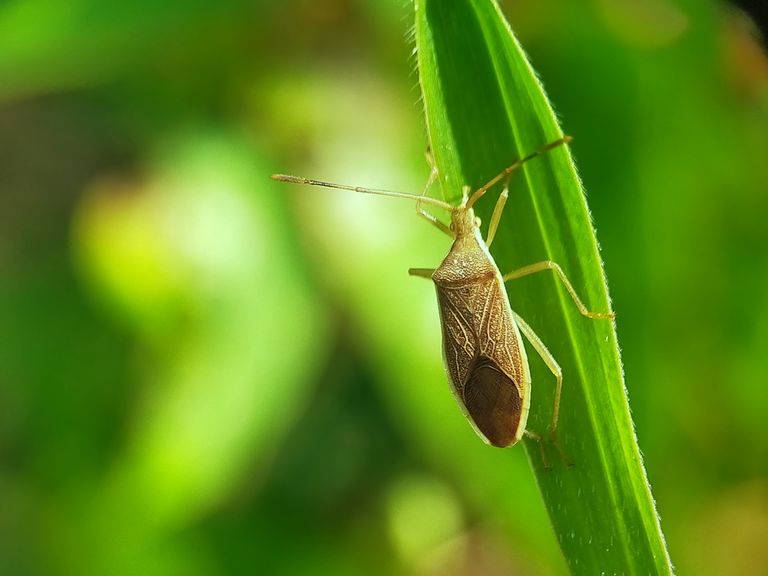
There are several ways to remove weeds from the field and its surroundings to prevent rice lice from multiplying during the fallow period. Among other things, the height of the land with the application of fertilizer and water evenly encourages rice to grow and develop at the same speed. Planting rice fields, in one village, simultaneously (simultaneous planting) also helps reduce the problem of bed bugs. Catching rice lice, in the morning or evening, with nets can be effective at low densities of rice lice, although labor intensive. Encouraging biological control agents: Some wasps, grasshoppers and spiders attack rice lice or rice flea eggs. Indiscriminate use of insecticides interferes with biological control, resulting in pest resurgence.

Before using pesticides, consult a plant protection specialist for advice, guidance, and warnings specific to your situation. Begin exploring the field at pre-flowering and continue daily until the dough stage is hard. Count rice bugs in the morning or evening from 20 hills while walking diagonally across transplanting fields. Adults often fly out of the way before you reach the rice plant, so the count may only show immature form. Immediate control may be required if there are more than 10 bedbugs/20 hills. The choice of insecticide depends on many factors such as the available application equipment, the cost of the insecticide, the experience of the applicator, or the presence of fish. The benefits of using insecticides must weigh the risks to health and the environment.
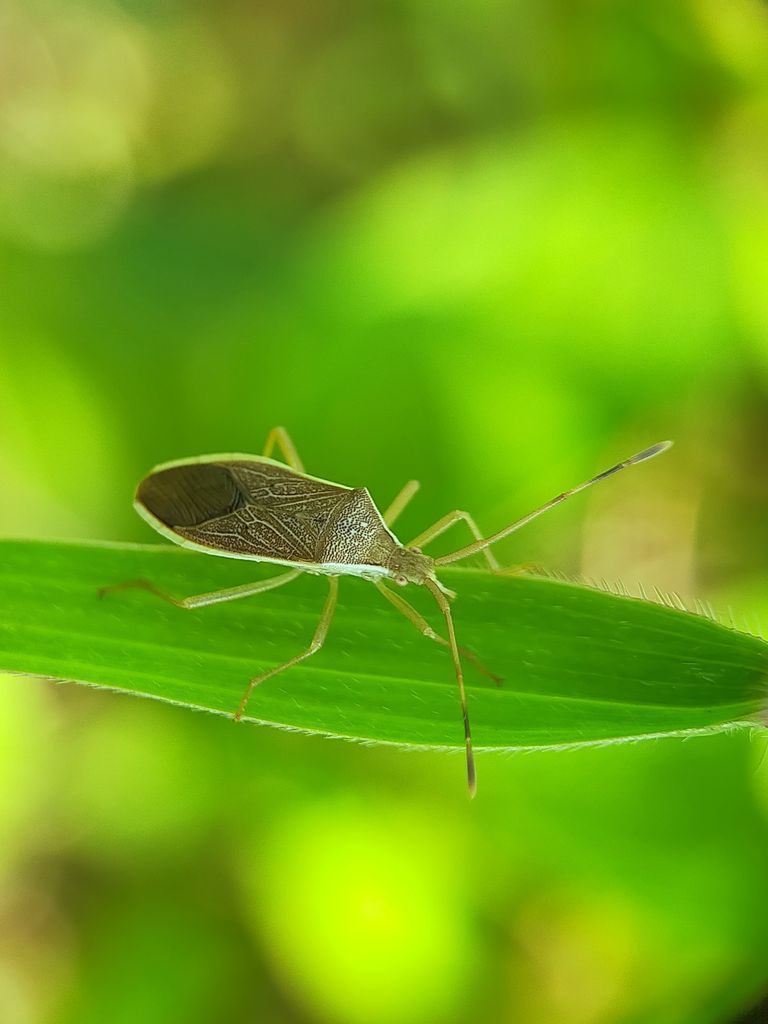
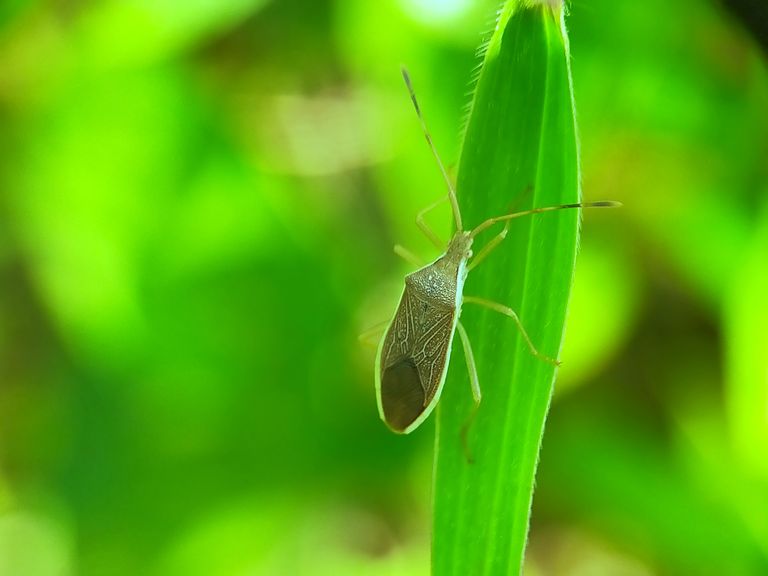
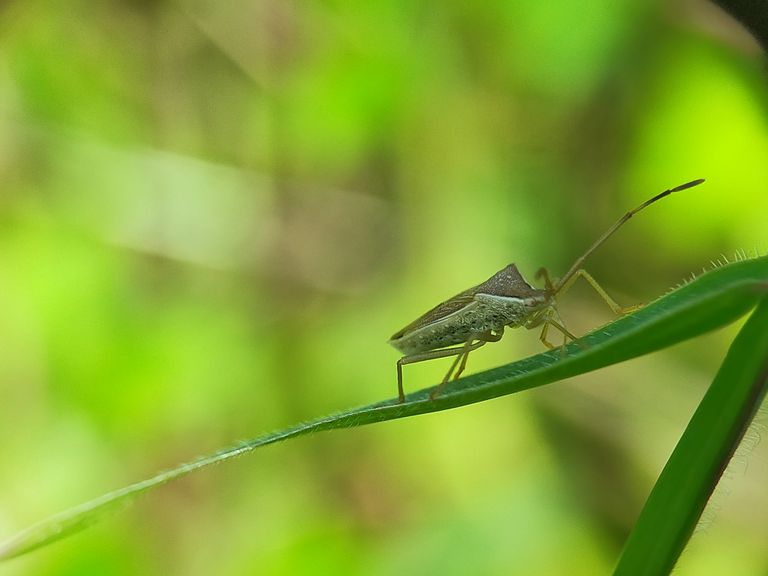
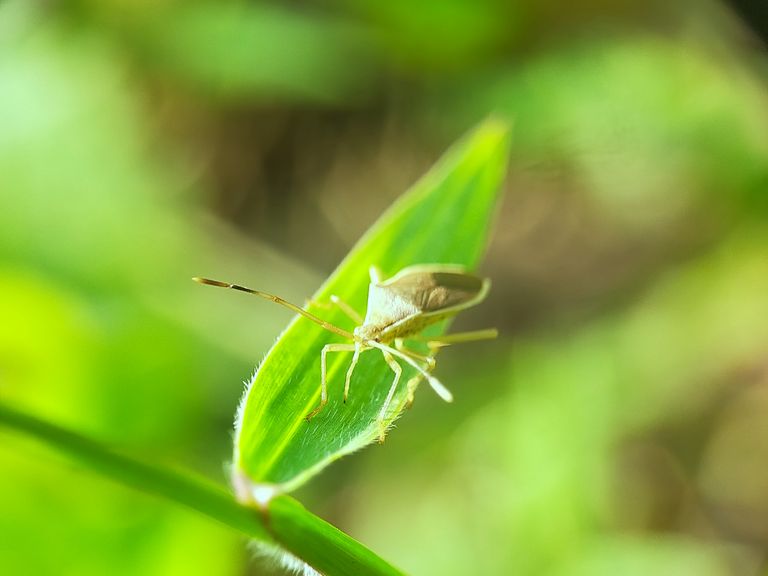
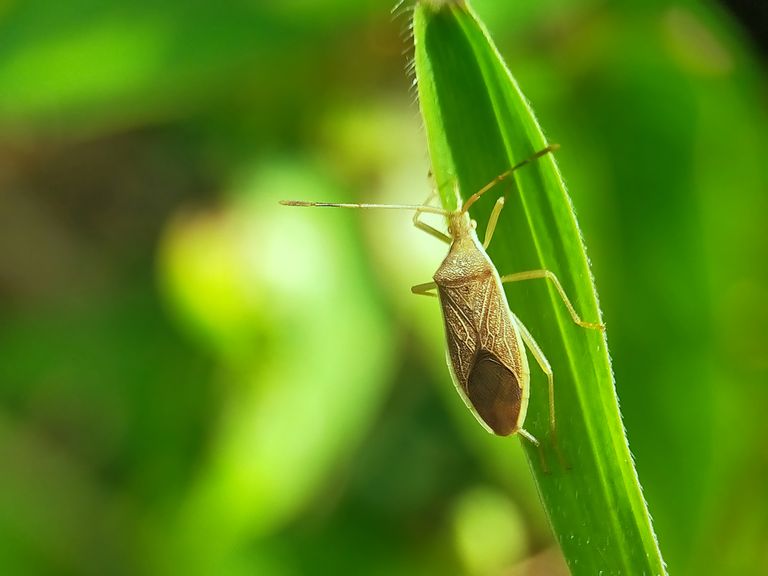
This is all I can say more and less I apologize, hopefully it will be useful for me, and hopefully it will be useful for all readers in general, thank you for visiting my blog, don't forget to follow and vote for my posts. , and one more thing, don't forget to share this post with other friends.
Thank you for visiting my blog, don't forget to follow and vote for me to post, and others don't forget to share this post with other friends.
Greetings to all on Blurtter....
Hi! I just curated your content!
If you like, please take a moment to vote for my witness. 🗳️ https://blurtwallet.com/~witnesses?highlight=outofthematrix
ok